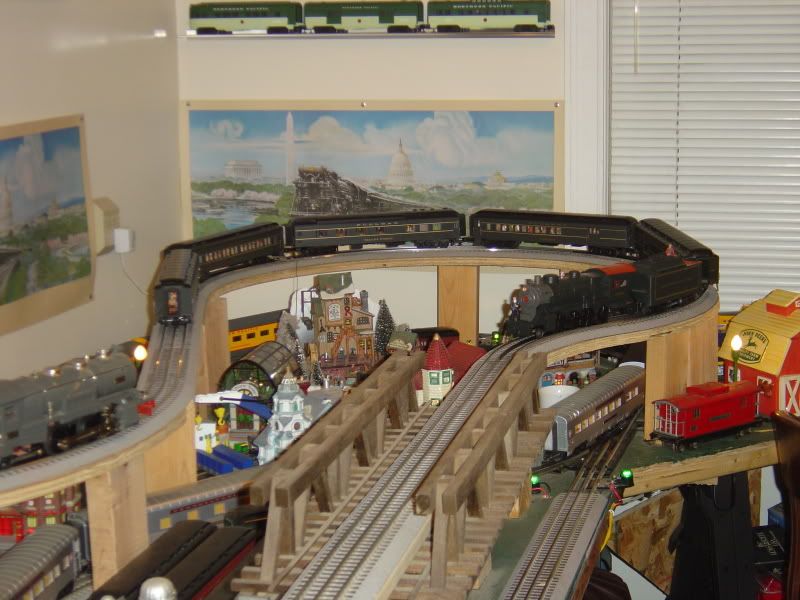quote:
Originally posted by Rhaichen:
Using the MTH loco speed control at the default low and constant speed, do all (PS2) engines go at the same speed given the same amount of volts? Or, for example, will an 8-pound engine and tender go slower than a 5-pound one?
By "low and constant speed" I assume you mean the default mode toggled by Whistle-Bell-Bell.
Ideally yes, different PS2 engines (even at different loads) set to the default speed mode should run at the same speed for the same track voltage. In practice they don't for a wide variety of reasons. For example, if you add load to an engine it needs to draw more current to run at a given speed. The transformer output voltage itself drops a bit. There is additional drop between the transformer, track, and the PS2 board itself where the voltage is finally measured. Bottom line is the engine sees a lower track voltage and can only assume the user lowered the track voltage and wants to slow down.
There are other esoteric factors such as how a smaller wheeled RS-1 "takes" or slips on tight curves vs. a larger wheeled 0-6-0. Or how a pure-sine transformer set to the same voltage as a chopped-sine transformer can result in different engine speeds. Blah blah blah.
IMO, the bottom line is to observe that even the DCS command guys, with
digital speed control, don't get perfect tracking between engines. I suggest you benchmark your engines by running each on the same loop at a couple test voltages (say, 12V and 16V) and time how long each takes to run N times around. Put some load on each and do it again. Store the results. As a wag, if any engine is running more than 10% faster than the other or what it did last time, then you ought to look for some hardware issue like a dirty flywheel, broken gear tooth, whatever.
As for independent confirmation, if you don't have access to a club/friend with a DCS TIU setup, probably the cheapest way is to get a DCS Remote Commander (about $30?) and carefully step up the speed in 1 sMPH increments to, say, 10 sMPH and use a ruler and stopwatch to confirm the engine speed.
As for un-attended operation over long periods, I believe the most common method is to break the loop into sections, sense when trains are converging, and stop or slow the faster engine by adjusting its track voltage using diodes, relays, or the like. Dale H describes one method below.
Multiple trains on one loop



